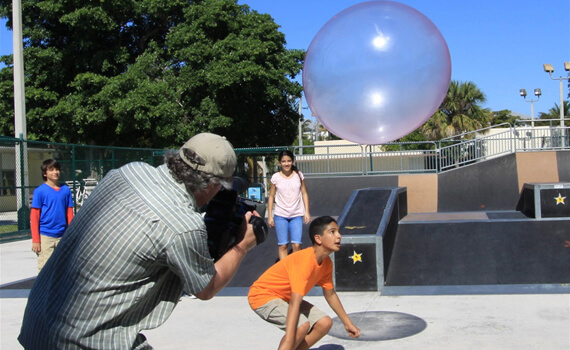
The Rhyming Mindset
It was a hot, sticky day in Black Mountain, NC. As I was dreamily turning slow circles in a hammock chair my 12-year old niece approached me with intensity. She grasped me by the shoulders and spoke earnestly:
“It’s unSTOPpable! Squishable and Squashable – it’s even washable! But be nice to your Wubble, and keep it out of Trouble!” I laughed (because she’s crazy) and then said “Wait, what’s a Wubble?”
As consumers, we’ve all been rhymed at on TV. Sometimes it feels silly to be seduced by something so sing-song. Do we enjoy the feeling of loving something we know is utterly goofy? Or is it something deeper?
What is it about rhyming copy that makes it so memorable and so compelling?
Researchers interested the connections between rhyming and memory have answers that go to the very heart, or brain, of the issue.
Rhyming sets our minds in motion.
Rhyming gives the brain a scaffolding to reconstruct our memories. If you have a fragment of a memory, this fragment can help you recall the rest of it. If we know the next verse is going to rhyme with this one, we can subconsciously narrow our recollection search-space to the rhyming words. The smaller the search space, the easier it is for our brains to supply the missing half. Rhymes are quicker mental “calls to action.” {Source: Yohan John}
Similarly, poetic rhythm gives a sense of the length of the words and phrases to follow, giving you more clues. Alliteration tells you what the first sound of each word in a phrase will be. In short, something that is easily memorized contains clues for recollection embedded within it. When we hear these clues, the Sherlock Holmes in all of us kicks subconsciously into gear.
For this reason, rhymes can be deeply satisfying.
When we hear a rhyme, our brains can more deeply process, and therefore remember, the information. As we mentally process a rhyme, our minds engage to unravel the clues of what is unfolding as it happens. An audience listening to a rhyme is subconsciously participating in actively remembering it. {Source: Bolton}
According to cognitive scientist David Rubin in his classic Memory in Oral Traditions, tales that last for generations describe concrete actions, use powerful images, are sung or chanted, and employ patterns of sound: alliteration, assonance, repetition, and most of all, rhyme. {Source: Paul}
The correct combination of these universal characteristics should ideally also create an advertising message that is clear, memorable, and effortlessly repeatable. And for the record: yes, I do own a Wubble, did not keep it out of trouble, bopped it, popped it….and bought another!
Further Reading:
https://www.nextavenue.org/how-music-can-boost-your-memory/
https://www.quora.com/Why-are-rhyming-statements-easier-to-memorize
http://ideas.time.com/2013/09/17/need-to-remember-something-make-it-rhyme/
https://psychcentral.com/lib/memory-and-mnemonic-devices/
https://web.stanford.edu/~gbower/1969/why_rhymes_easy_learn.pdf
